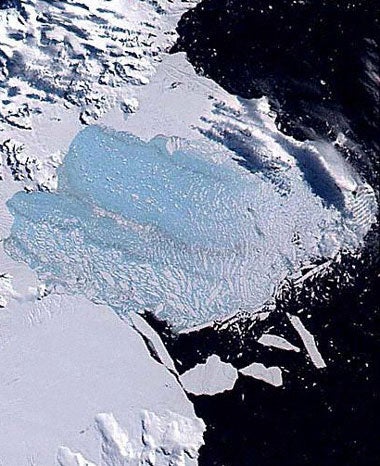Ice shelf collapse was biggest for 10,000 years

Your support helps us to tell the story
From reproductive rights to climate change to Big Tech, The Independent is on the ground when the story is developing. Whether it's investigating the financials of Elon Musk's pro-Trump PAC or producing our latest documentary, 'The A Word', which shines a light on the American women fighting for reproductive rights, we know how important it is to parse out the facts from the messaging.
At such a critical moment in US history, we need reporters on the ground. Your donation allows us to keep sending journalists to speak to both sides of the story.
The Independent is trusted by Americans across the entire political spectrum. And unlike many other quality news outlets, we choose not to lock Americans out of our reporting and analysis with paywalls. We believe quality journalism should be available to everyone, paid for by those who can afford it.
Your support makes all the difference.Research by scientists from Hamilton College in New York, based on the scrutiny of six ice cores from the vicinity of the ice shelf, found that a collapse of this size had not happened during the period since the end of the last Ice Age.
The piece of ice which sheered away from Larsen B into the sea in 2002 was roughly the size of Luxembourg. The study, published in the journal Nature, shows that the ice shelf had been thinning over the millennia but went through a more rapid loss in recent decades, probably due to global warming.
In March 2002, scientists announced the Larsen B ice shelf on the Antarctic Peninsula had entered a phase of rapid break-up with more than 50 billion tons of ice spilling into the Weddell Sea to form thousands of massive icebergs. It had been known for many years that the ice shelf was thinning and in retreat but the speed of its final collapse astonished scientists. It took just 35 days for the Larsen B ice shelf to fall away completely after a Nasa satellite detected the first ruptures in the 1,255 square miles of ice at the end of January 2002.
Although the disintegration of ice shelves does not itself cause sea levels to rise (because they are already floating), their loss is thought to speed up the flow of ice from ice sheets on land, causing sea levels to rise. Larsen B's smaller neighbour, Larsen A, broke off in 1995 and other much bigger ice shelves nearby, such as the Ross and Ronne, are also considered to be at risk of disintegrating, according to studies by the British Antarctic Survey in Cambridge.
Researchers have measured a 2.5C increase in average temperatures in the Antarctic peninsula over the past 50 years and many scientists believe there is little doubt that this rise can be linked to global warming and climate change exacerbated by man-made pollution.
The latest study by a team led by Eugene Domack analysed oxygen isotopes and the microscopic plankton called formanifera, which are found in ice cores dating back 10,000 years. "We infer from our oxygen isotope measurements in planktonic formanifera that the Larsen B ice shelf has been thinning throughout the Holocene [from the present to 10,000 years ago], and we suggest that the recent prolonged period of warming in the Antarctic peninsula region, in combination with the long-term thinning, has led to collapse of the ice shelf," the researchers said.
Subscribe to Independent Premium to bookmark this article
Want to bookmark your favourite articles and stories to read or reference later? Start your Independent Premium subscription today.
Join our commenting forum
Join thought-provoking conversations, follow other Independent readers and see their replies
Comments